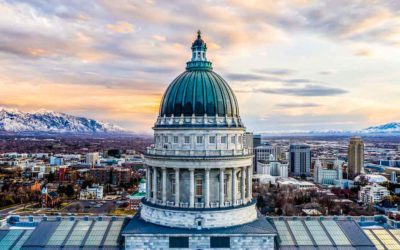
Written by Christine Cooke Fairbanks
April 16, 2021
In fact, the proposal does cover a lot. The Build Back Better infrastructure proposal – a three-part agenda that includes the American Rescue Plan, the American Jobs Plan and the American Families Plan – aims to address transportation infrastructure, electric vehicles, housing, caregiving, drinking water, a new electric grid, high-speed broadband access, and more.
The White House, in fact, cited a report by the American Society of Civil Engineers, which gave America’s schools a D+ on infrastructure. Thus, although education is primarily funded and governed at the state level, even public education is supposed to get a boost from the federal proposal.
Want to know how public education would be impacted? Take a look below.
School building construction and renovations
The plan includes $100 billion for new school construction and upgrades of existing school buildings. According to a press conference with President Joe Biden, the aim is also to address schools that don’t even offer clean water in their drinking fountains and school buildings that still have asbestos. Likewise, the plan calls for $45 billion to replace lead pipes nationwide, hopefully reducing lead exposure in 400,000 schools and other child-care facilities.
According to a state-specific breakdown of the American Jobs Plan, Utah needs roughly $496 million for maintenance on its schools. (It’s worth noting that Utah got the highest score in the nation for its infrastructure overall – not just schools – receiving a C grade.) The plan seeks to both modernize and build new schools across the state and country.
Broadband internet access
The plan also provides for $100 billion to expand broadband internet access to communities. While this piece is not necessarily targeted toward schools, it would certainly have an impact on them. Improved internet access may be especially helpful for students as they work on homework after school hours or where they are primarily accessing remote/online schooling.
According to Utah’s report for the American Jobs Plan, “9.25% of Utahns live in areas where, by one definition, there is no broadband infrastructure that provides minimally acceptable speeds.” Likewise, 54.35% of Utahns reside where there is only one such internet provider, and 9.2% of Utah households do not have an internet subscription at all.
Cutting down on waste at schools
The infrastructure plan also proposes ways to make schools more environmentally friendly. For example, the plan seeks to convert school buses into electric vehicles. The hope is to reduce emissions by 5.3 million tons and decrease fuel costs for school districts.
Likewise, it seeks to eliminate paper plates and disposable goods used in public schools. Apparently, some schools in Minnesota did away with disposable kitchenware and saved $23,000 over three years and saved on trash and water. How this might play out in various districts in Utah remains to be seen, but it’s at least an interesting cost-saving idea for the budget-friendly mentality that exists in the state.
Higher education
The proposal would also address higher education to a limited degree. Specifically, the plan calls for $10 billion to go to historical black colleges and universities (HBCUs) as well as $15 billion to create centers of excellence at these schools.
While this mostly impacts states in the southeastern region of the United States, it’s worth noting how expansive the Biden proposal is for education, ranging from K-12 to higher education.
Spending over $2 trillion on infrastructure is no small thing for a nation, especially because it comes with tax hikes. Only time will tell whether congressional leaders will be able to muster the political support necessary to enact that spending.
Read More
Is California’s minimum wage hike a mistake?
Is raising the minimum wage a good tool to help low-income workers achieve upward mobility? That’s the key question at the heart of the debate over California’s new $20 an hour minimum wage law for fast food workers.
Why is Utah at odds with Justice Department over treatment of gender-dysphoric prisoner?
Lawsuit illustrates a little-known practice of federal agencies – giving various forms of “guidance” which are not supposed to be legally binding. The practice raises serious legal and constitutional questions.
What would a parent-teacher ‘handshake’ look like in Utah?
This partnership does not allow either party to pass blame entirely to the other. There is no scapegoat, only opportunities for either party or both to work on the factors within their scope.


